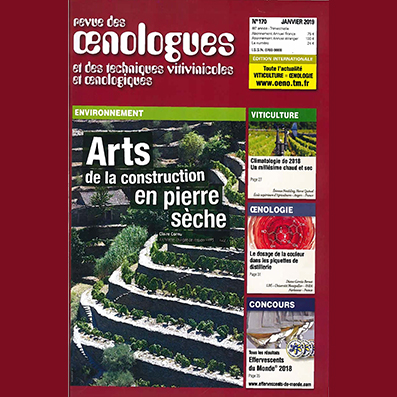06 gennaio 2019

Download the article here
Extract :
Even though the partnership of cork and wine dates back to Antiquity, the use of cork stoppers became widespread mainly in the 19th century, with the expansion of transport and storage of wines in glass bottles. During the last 30 years, stricter market requirements, coupled with the emergence of new closures (screw caps, synthetic stoppers and micro-agglomerated cork stoppers), have led the scientific community to examine the factors that affect the quality of traditional cork stoppers produced by punching from a cork plank. One of the main reasons was the premature oxidative aging of dry white wines from Bordeaux and Burgundy in the early 2000s when bottled with traditional cork stoppers. It was shown that the stopper had a significant effect on the appearance of this premature oxidative aging, even though this phenomenon is also, of course, related to the quality of the raw materials and to the care that the winemaker takes in making the wine (Godden et al., 2001).
Research has focused on measuring oxygen transfer (OTR: Oxygen Transfer Rate) through several types of stoppers, in order to more precisely assess their impact on the organoleptic properties of wines. During the 1990s, the development of new measurement methods, whether manometric (Rabiot et al., 1999), polarographic (Vidal et al., 2004), colorimetric (Lopes et al., 2005), coulometric (Godden et al., 2001) or via chemiluminescence (Diéval et al., 2011), helped to better quantify gas transfer through closures. Screw caps, synthetic closures and variable-porosity micro-agglomerated cork stoppers have been shown to be more homogenous than traditional cork stoppers (Lopes et al., 2007; Oliveira et al., 2013).
The increasing number of methods used to evaluate OTR has, however, caused some confusion in evaluating the performance of closures. Depending on the chosen measurement method, it can be hazardous to try to compare the OTR values of closures. OTR is highly related to the measurement protocol used, and in particular to the pressure gradient between the two sides of the closure. However, knowledge of the oxygen contribution of each type of closure can be of great help for enologists. It can be used to guide their closure choices, depending on the type of wine being made.
The objective of this study is to acquire a better understanding of oxygen contributions from microparticle cork stoppers with various formulations as well as from traditional cork stoppers (natural corks of the Flower, Extra and Super visual grades).
